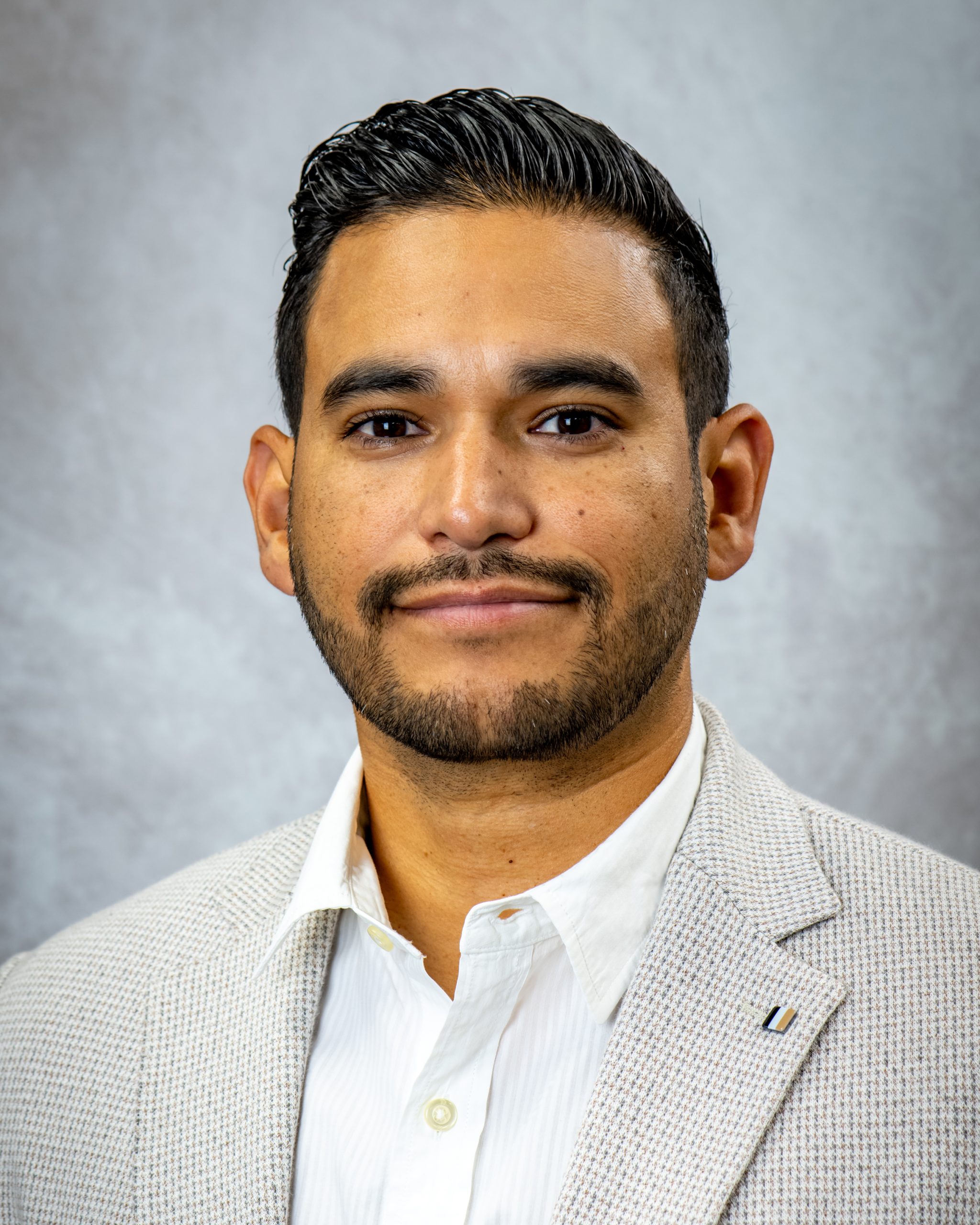Javier Hernandez
Episode 133
The Accident that Inspired Connection
Javier Hernandez is a first-generation Mexican-American born and raised in the San Gabriel Valley area of Los Angeles County. He received his Bachelor of Arts degree in Business Administration from California State University, Fullerton. He later earned his Executive master’s degree in urban planning and development from the University of Southern California. Javier has nearly 20 years of experience advancing local, regional, and statewide public policy, political strategy, urban and multimodal transportation planning, capital infrastructure programming, and holistic community and economic development.
As the director of innovation and communications for the City of Pico Rivera, Javier oversees and manages regionally significant projects, strategic initiatives, legislative and public affairs, and special development programs. As an example, Javier is developing a robust transit-oriented, urban downtown community in Pico Rivera that fully integrates new parks and river revitalization, mass-transit alternatives, and a sports and entertainment district. Javier conceived, and is now leading regional efforts to establish and sustain an agglomeration economy in the Gateway Cites dedicated to the full product life cycle of micro electric vehicles. Javier has passionately devoted his career to driving equitable public and environmental outcomes by empowering communities to actively participate throughout civic decision-making processes.
Javier is passionate about music and is among the last generation of all-vinyl DJ’s. He collects all sorts of oddities and is considered somewhat of a gear hack. He maintains an active lifestyle with a wide range of activities such as mountain and road cycling, handball, hiking, and circuit training. He enjoys camping, traveling, and making life-long memories with his wife, two daughters, and his Australian cattle dog, Canelo.
Javier Hernandez Takeaways
- Javier Hernandez was born in the SGV area of Los Angeles County
- Javier Hernandez earned his Bachelor of Arts degree in Business Administration from California State University
- Javier earned his executive master’s degree in urban planning and development from the University of Southern California
- Javier is the director of innovation and communications for the City of Pico Rivera
- Javier has two decades of experience advancing local, regional, and statewide public policy, political strategy, urban and multimodal transportation planning, capital infrastructure programming, and holistic community and economic development.
- Javier has a deep passion for music and is an all-vinyl DJ
Javier Hernandez Quotes
“The Streets are owned by the people today, not the cars. And I remember just hearing about that, and I was like, you know, I wanna replicate that. I wanna do something like that and use that as an opportunity to educate leaders, community leaders, elected officials, and that’s exactly what we did.”
“This is the perfect opportunity to…introduce the bicycle as a sustainable mode of transport to reduce vehicle miles traveled and greenhouse gases, and at the same time, to improve safety on the roadway to reduce or prevent serious accidents that result in injury or, you know, God forbid, fatality.”
“We have been working very, very hard to build up a coalition… If we were just 1 city trying to do this 26-mile-long thing without the help and support from anybody else, and no one’s really gonna pay attention to us.”
Show Notes
What is Javier Hernandez’s connection to the San Gabriel Valley?
Javier explains that Pico Rivera, while not within the San Gabriel Valley boundaries, shares a border, and he considers the city’s connection to the San Gabriel Valley as it is adjacent to it.
What incident motivated Javier hernandez to start the nonprofit organization cyclertopia?
Javier was inspired to start Cyclertopia after a biking accident at 17, where he was deemed at fault due to a lack of dedicated space for vulnerable road users, leading to a deep realization about the need for safer spaces for biking, walking, and playing.
How did Javier’s experience with an accident as a teenager shape his perspective on the lack of dedicated space for vulnerable road users
Javier’s accident and subsequent loss of a claim made him deeply aware of the challenges faced by vulnerable road users, emphasizing the need for dedicated spaces and inspiring him to address these issues later in life.
What led Javier Hernandez to start the nonprofit organization Cyclertopia, and what was its initial focus?
Javier started Cyclertopia to address the lack of safe spaces for biking and walking. Initially, the organization focused on creating events inspired by cyclovia events in Bogota, Colombia, to raise awareness and advocate for safer spaces for cyclists.
How did Javier Hernandez’s nonprofit work evolve, leading to the formation of active San Gabriel Valley?
Javier Hernandez’s early work with Cyclertopia evolved as he partnered with like-minded individuals, forming Bike San Gabriel Valley, which later became Active San Gabriel Valley, a formal nonprofit organization dedicated to bringing positive change to the region.
What motivated Javier Hernandez to incorporate bicycling as a solution to address obesity, reduce vehicle miles traveled, and improve road safety?
Javier recognized an opportunity to combat obesity, reduce vehicle emissions, and enhance road safety by promoting bicycling as a sustainable mode of transport, inspired by the success of addressing previous public health issues through proactive programs.
How did Javier Hernandez leverage his experience with public policy implementation from a previous nonprofit to address bicycling and public health issues?
Javier drew on his experience managing programs in a nonprofit focused on public health to introduce and implement public policies related to bicycling, addressing issues such as obesity, vehicle emissions, and road safety in the San Gabriel Valley.
What was Javier’s initial involvement in the nonprofit sector, and what were the issues addressed by the organization he worked for?
Javier initially worked with a nonprofit focused on preventing STDs, HIV, AIDS, and teenage pregnancies. The organization aimed to address these issues through public policy implementation and research.
What was the response when Javier proposed incorporating bicycles into the nonprofit’s mission, and how did he proceed after facing resistance?
Javier’s proposal was rejected due to a lack of expertise in bikes. Undeterred, he operated from Cal State LA, hosting education workshops. Eventually, partnerships formed, and the focus shifted to community bike rides, street closures, and festivals.
How did Javier’s advocacy for safe spaces for cyclists progress from educational programs to policy changes at the local level?
Initially facing challenges, Javier mobilized people, with 200-300 attendees at council meetings. The organized movement demanded safe communities, leading to increased recognition and eventually substantial grants for projects like a bicycle master plan.
What specific changes and initiatives did Javier’s organization pursue to create safe spaces for cyclists, and how did they address misconceptions about cyclists’ needs?
Beyond bike lanes, they aimed for comprehensive changes, educating both cyclists and motorists. They actively participated in the development of the Complete Streets Act of 2006, focusing on safety for vulnerable road users.
Was Javier able to provide an example of a city that successfully implemented safe spaces for cyclists and the key features of this project?
Javier was able to provide an example. Temple City in California implemented a protected bikeway on Rosemead Boulevard. Features included trees for shade, a protected bike lane, and community engagement. This project showcased positive impacts on safety and community dynamics.
How did the implementation of safe spaces for cyclists in temple city impact traffic, fatalities, and businesses along the corridor?
Despite initial concerns about traffic congestion, the impact was minimal. Fatalities and serious injuries decreased, and businesses adapted by attracting new clientele, challenging the notion that street parking loss would harm them.
Has the concept of creating safe spaces for cyclists been replicated in other cities, and what challenges and benefits have emerged from these efforts?
Javier confirms that other cities replicated the concept, introducing Class 4 bikeways. Initial challenges included concerns about traffic, parking loss, and business impact. However, positive outcomes, such as reduced incidents and thriving businesses, prompted widespread adoption.
Where did Javier go to college?
Javier went to Citrus College in Azusa for a few years. Then, he ended up going to Cal State for his business degree. Eventually, he earned his executive master’s degree at USC.
What was Javier Hernandez’s experience at USC like?
Javier was repeatedly denied schools, so he spent a lot of time building up his portfolio and gaining new experience until he finally got accepted at USC. He enjoyed it very much, and his favorite subject was basic math. This interest was sparked by joining the math club in 7th grade after being suggested to join by one of his teachers. He excelled at math competitions.
Can Javier provide more context about the class 4 bike lane project?
Javier was doing bicycle counts to understand bike usage and safety, realizing the challenge of balancing space for a minority of cyclists with the need for safe infrastructure. This led to thinking about moving the masses north-south in the corridor.
What initiated Javier’s interest in improving safety for road users in specific areas?
While working for Supervisor Hilda Solis, an incident on Rosemead Boulevard in unincorporated LA County highlighted the need for safety improvements. This incident led to a project to enhance safety and mobility on that roadway.
What is the complete corridor master plan? What is its scope and purpose?
The Complete Corridor Master Plan aims to improve safety for vulnerable road users and consider the masses by integrating transit-oriented development and addressing housing issues. It covers Rosemead Lakewood Boulevard from Pico to Long Beach.
____________________
Music Credits
Intro
Like it Loud, Dyalla, YouTube Audio Library
Stinger
Scarlet Fire (Sting), Otis McDonald, YouTube Audio Library
Outro
Indecision, Dyalla, YouTube Audio Library

Javier Hernandez
The People of the SGV
Parks, Open Space, Mountains in the SGV
The Emerald Necklace








